Potted Amaryllis: Leave ‘No More Than 1cm’ Between The Bulb And The Pot Edge

HOUSEPLANTS > AMARYLLIS > CONTAINERS

Elizabeth is a Permaculture Garden Designer, Sustainability Consultant and Professional Writer, working as an advocate for positive change. She graduated from the University of St. Andrews with an MA in English and Philosophy and obtained a Diploma in Applied Permaculture Design from the Permaculture Association.
Reviewed By COLIN SKELLY

Colin is a Horticulturist and Horticultural Consultant with experience in a range of practical and managerial roles across heritage, commercial and public horticulture. He holds the Royal Horticultural Society’s Master of Horticulture award and has a particular interest in horticultural ecology and naturalistic planting for habitat and climate resilience.
IN THIS GUIDE
AMARYLLIS GUIDES
Container Growing
Growing From Seed
Indoors Growing
Planting
Propagation
Pruning
Re-Blooming
Repotting
Amaryllis is the name given to a genus of South American bulbous perennials, Hippeastrum, typically sold to bloom as houseplants over the winter months.
The genus has been intensely cultivated and bred since the early 1800s to produce large, dramatic and colourful flowers.1S. (n.d.-b). Amaryllis,. Wisconsin Horticulture. Retrieved March 9, 2023, from https://hort.extension.wisc.edu/articles/amaryllis-hippeastrum/
Amaryllis are almost always grown as container plants, and this is definitely the best way to grow them in the UK.
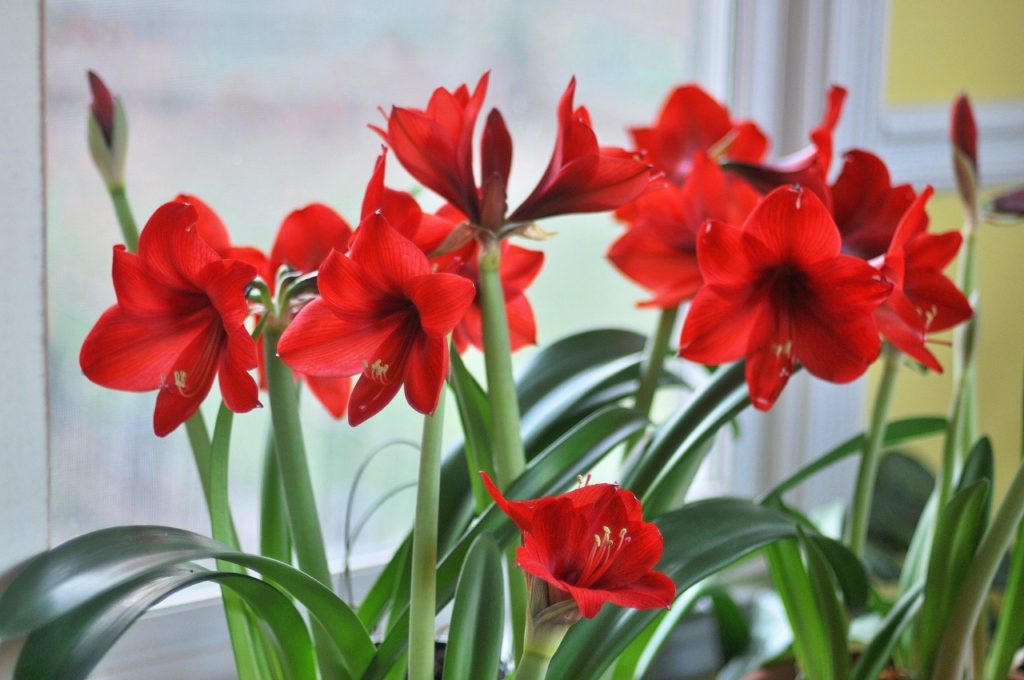
Too tender to grow outside year-round, these plants are typically grown in containers so that they can be grown indoors in winter when they bloom before they are moved outdoors after the last frost.
Grown in containers outdoors over summer, the plants are then typically brought back indoors for a period of dormancy before they then rebloom the following winter or early spring.
Choosing Containers
When choosing a container for an amaryllis bulb, the key is to find a pot that is only just large enough to accommodate it.
These are plants that thrive when their root systems are somewhat restricted.
“I try to find a pot that fits the Amaryllis bulb with ideally no more than 1cm of compost space between the bulb and the pot edge,” says RHS Master Horticulturist Colin Skelly.
“This will vary with the species or cultivar and the size of the individual bulb, so a range of pot sizes is helpful.
“Shallower half-pots are ideal as this restricts the amount of compost at the base of the bulb too.”
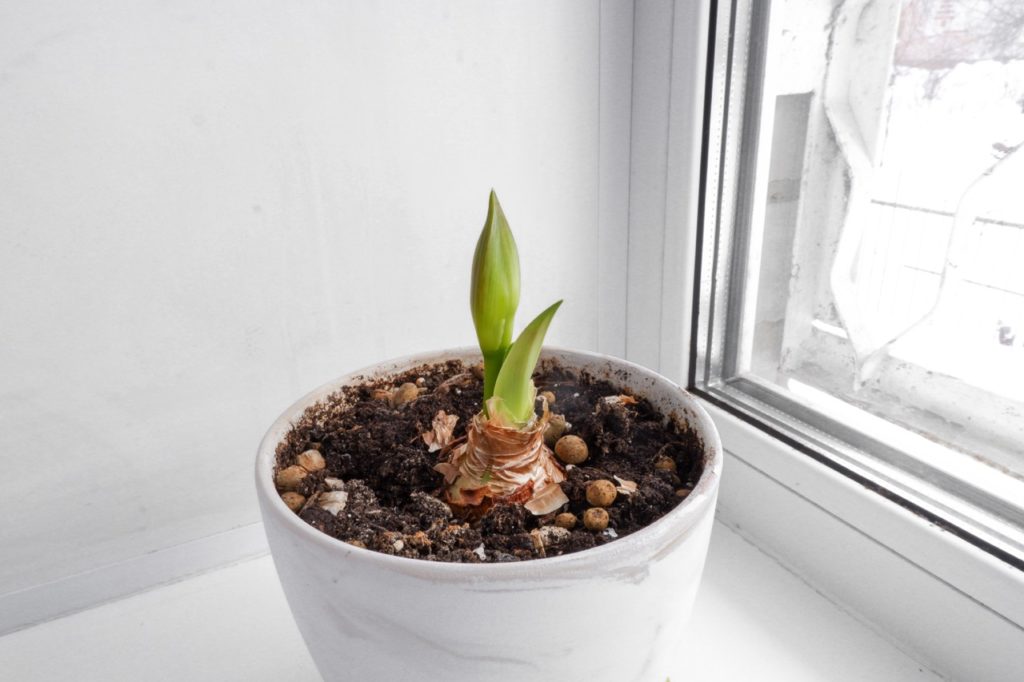
Another important thing to remember is that these plants require free-draining conditions, so it is important to choose a pot that has good drainage at the base to allow excess water to drain away freely.
Compost For Amaryllis
The container for an amaryllis bulb should be filled with John Innes No. 2 or a peat-free multipurpose compost.
Potting Up Hippeastrum
When planting an amaryllis bulb, it is a good idea to soak it before planting.
Place it in tepid water for a few hours prior to planting, as this will allow it to rehydrate – helping to ensure that it gets off to a good start and can somewhat speed up the rate of growth.

When planting the bulb, make sure that around two-thirds of the bulb remains above the surface of the soil, gently firming the growing medium in around the lowest third of the bulb and around the edges of the container.
Make sure that the medium is moist but excess water can drain away freely.
How Many Can You Plant Per Pot?
It is best to place a single bulb into a container just large enough to accommodate it.
These are showy flowering plants that can enliven your home over the winter or spring months, depending on when the bulbs are planted.

They are usually grown as stand-alone specimen plants rather than in mixed displays.
However, sometimes three bulbs are planted together as a group within a larger container, again, one that is just large enough to accommodate all three.
Potted Amaryllis Care
Caring for amaryllis between planting and when the flowers fade is very easy.
Getting one to rebloom is a somewhat more complex process, but one that is still relatively easy to undertake.
After a shoot emerges, place the amaryllis in a bright spot indoors at around 21°C.
Water sparingly until new leaves emerge, but then water regularly, making sure that the growing medium does not entirely dry out, but also ensuring that overwatering does not occur.
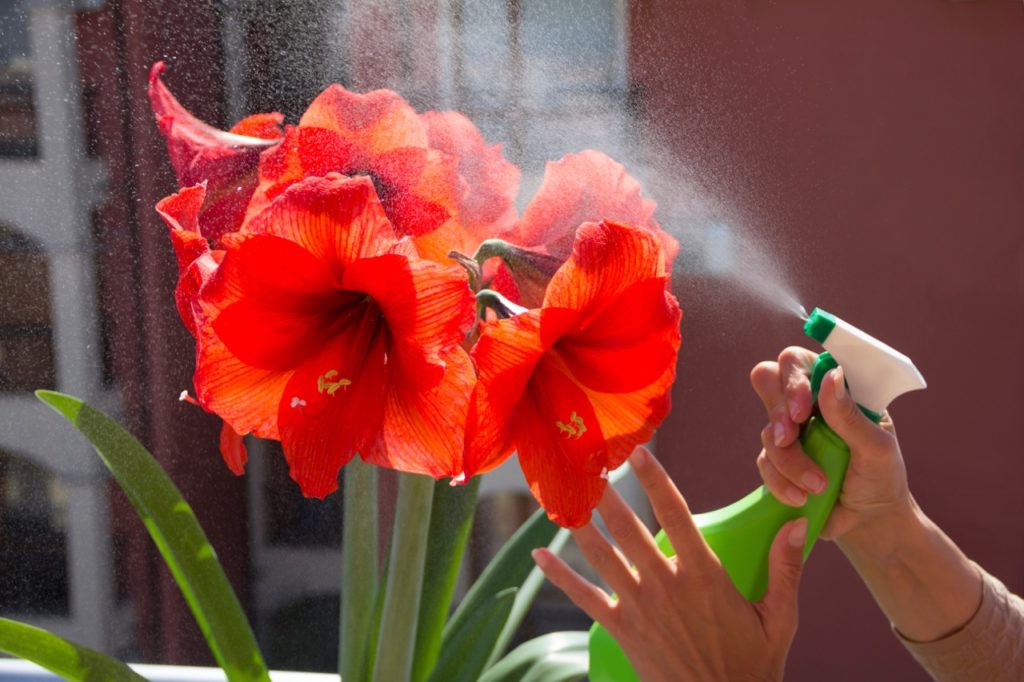
Don’t let water remain in a saucer or another receptacle below the pot.
It is a good idea to turn the pot regularly so that the plant does not become too lopsided due to growing towards the light.
Some cultivars have very large flowers and these can benefit from some support, so should be staked.
When the plant begins to bloom, typically 6-8 weeks after planting, move it to a slightly cooler location.
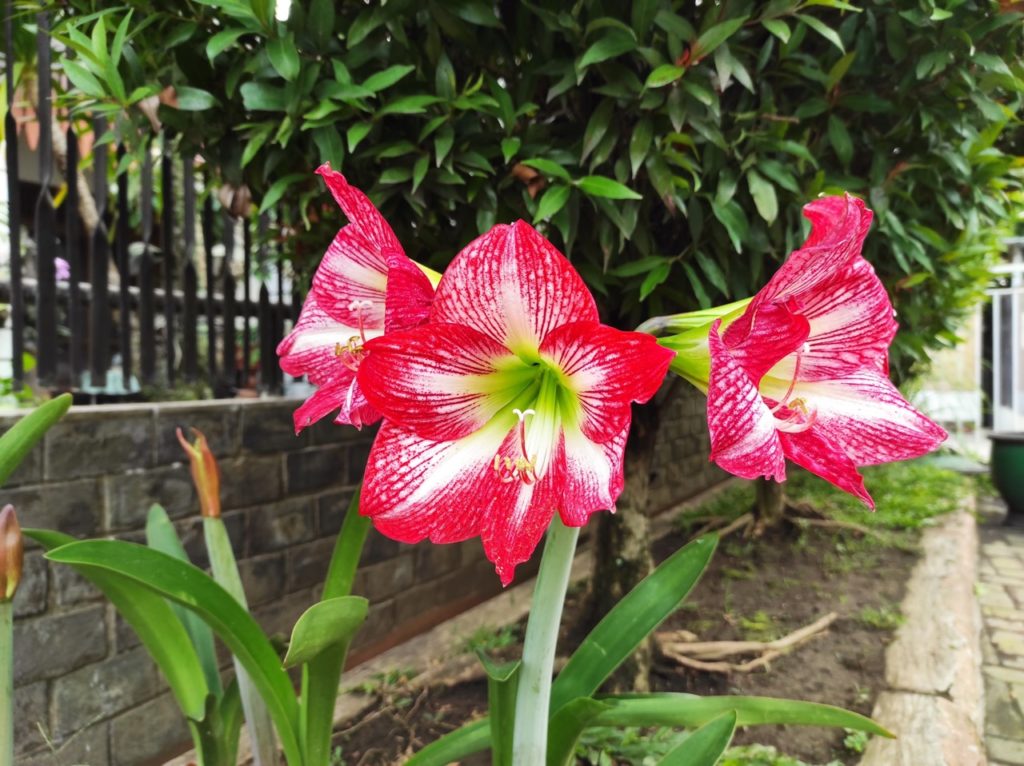
Ideally, this should be one where temperatures remain between 15-18°C.
Avoid a spot with extreme temperature variation and don’t place your plant in a draught.
The cooler temperatures can slightly extend the blooming period.
Many people buy amaryllis for the festive period and then discard it when the blooms are done, but with a simple process, you can get the plant to rebloom the following year and again over the number of subsequent years.
After the plants have flowered, cut down flowering spikes to the base, near the bulb, making sure that the leaves are retained.
Grow on the plants indoors, watering carefully and feeding with a balanced, organic liquid plant feed such as compost tea every week or so.
During this period, it is important for the leaves to be able to catch and store as much energy as possible, so ensuring plenty of sunlight (or using a grow light where sunlight is scarce) can be key to getting the plant to rebloom.
After the last frost date in your area, place the pot containing the amaryllis outside or in a greenhouse for the summer months.
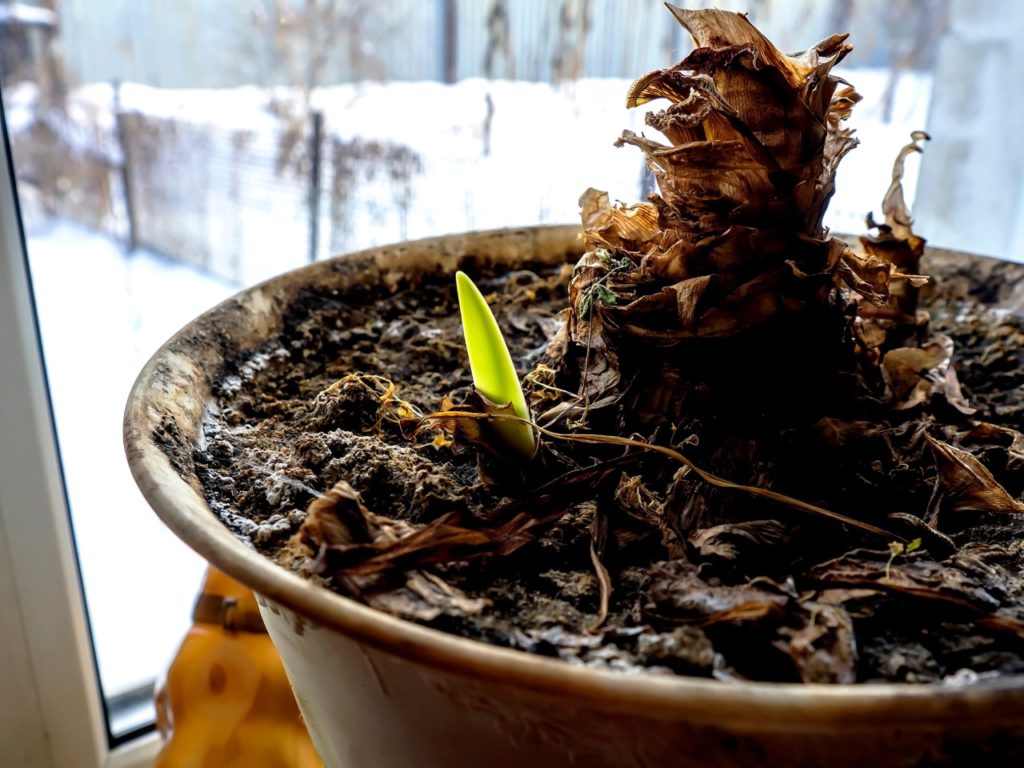
Make sure that they get plenty of light, but are protected from the scorching sun when the weather is very warm.
Towards the end of the summer or in early autumn, bring the plant back indoors so that it can enter into a period of dormancy.
This period of dormancy is crucial for the plants to be able to rebloom.
Keep in a cool spot, and stop feeding and watering to induce dormancy.
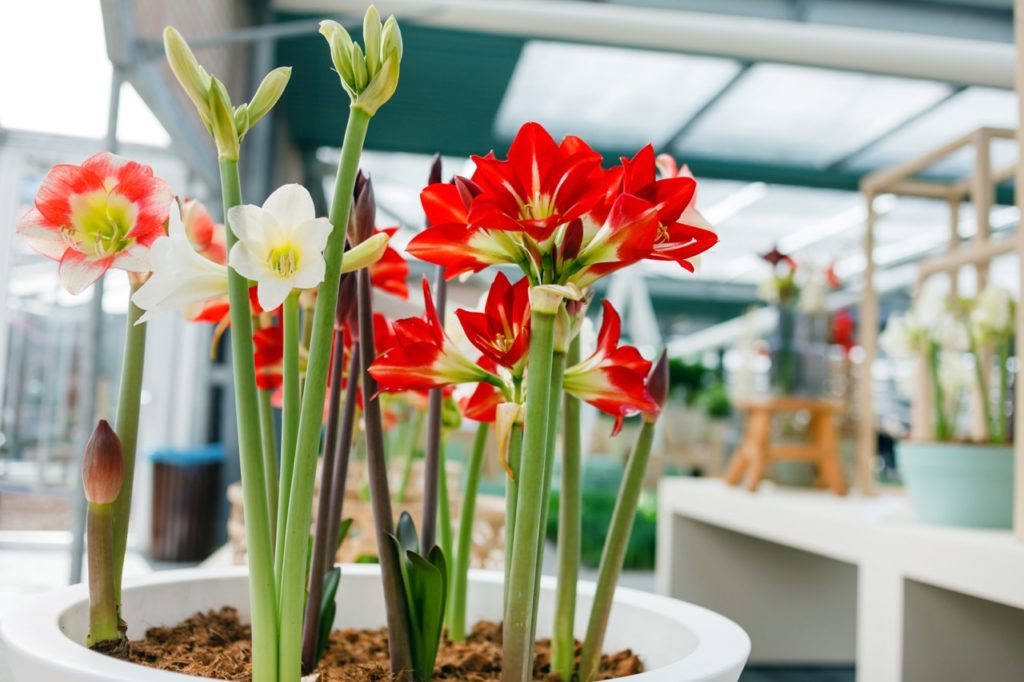
The foliage will die back and can be cut off; the bulbs can remain dormant in their pots or be lifted and moved for storage.
After a month or two, you can repot the bulbs, plant as above and resume watering and feeding to encourage new growth.
Again, the bulbs should rebloom around 6-8 weeks after replanting.
Planting in late September should give certainty of blooms for the Christmas period.
References
- 1S. (n.d.-b). Amaryllis,. Wisconsin Horticulture. Retrieved March 9, 2023, from https://hort.extension.wisc.edu/articles/amaryllis-hippeastrum/
